Welcome to A Wild Green Heart. I'm glad that you're here. Today's post is my latest photo-diary report from my beloved urban green space, dear friend and wild goddess, Pomona Strand.
March has been a marvellous month at Pomona. In my post at the end of February, I outlined in some detail the devastation wreaked upon this place, for the umpteenth time, by the men and their machines.
I also spoke about how I experienced the waves of anger, grief, powerlessness, hope and delight - which took the first five months of last year to move though - in ninety minutes this time round. I have moved seamlessly into a period of seeing Pomona with the eye of my heart. The parts that have been cut down and churned up will grow back wilder than ever. I've watched it all happen before, and this time I'm not waiting to see it with my physical eyes: I'm walking it with every visit.
Reflecting on recent weeks, my time at Pomona this month has consisted of three main strands: Observing, Blessing, and Storytelling. Considering it now, I can see these three as making up different layers of experience, or acting as three different kinds of map of Pomona.
Let's start with Observing.
This is as straightforward as it sounds, making sure I keep my eyes and ears attentive as I walk and sit at Pomona. Noticing what's happening, what has appeared recently, what has changed, which beings are interacting with one another. This practice has definitely been aided by my time on the Permaculture Design for Creatives course with Liz Postlethwaite, and I would encourage anyone interested in such things to join one of her wonderful courses. You can read about Liz’s various offerings here - it's the ideal time to sign up as the introduction to permaculture design course will be starting soon!
The most obvious activity at Pomona this month has come in the shape of Canada geese. They have been pairing up and laying claim to various parts of Pomona for nesting sites, and they have become fiercely territorial! I frequently feed the geese and swans in the winter and early spring months, but I discovered that this can be an activity with unexpected consequences in March. As I fed a pair of them in the canal recently, all the other geese in the vicinity starting honking and making their way over, and before I knew what was happening, two of the males were having an almighty feud over it!
Goose feud over goose food
They were really going for it, and made an incredible din in the process, so I've opted to stop feeding them unless there's only a single pair present.
The swans are pairing up as well, though I guess their territories must be rather larger than those of the geese (there must be at least two dozen pairs of geese across Pomona) because I haven't witnessed any feuds between the swans yet. I'm grateful for this, because last year I saw a full on attack by one swan on another, and I genuinely thought it was going to kill it, so fierce and violent was the onslaught. The aggressor also made a noise that, to my ears, sounded exactly as I imagine a dinosaur might have done, which makes sense given the ancient ancestry of these impressive birds. I definitely prefer being around them in their more usual graceful state!
Swan in repose
The song birds are much more vocal now as well, which is always such a welcome sound. I especially love to visit on Sundays, when the noise of surrounding construction sites is absent, and the scrapyards by the canal are closed. The birdsong always sounds so much louder and clearer. Among the many birds I've heard are wrens and robins, chiff-chaffs and great tits, blackbirds and mistle thrushes. All of them an auditory delight!
All month I've been keeping my eyes open for the return of the sand martins to their nesting sites in the gaps of the concrete walls of the river Irwell. At the start of this month, my good friend Brendan gave me a gorgeous gift - passed on from his Bulgarian partner - this lovely martenitsa wristband, to celebrate Baba Marta.
Baba Marta (Grandma Marta) is a Bulgarian folk figure, celebrated on 1st March. The red and white threads symbolise the end of the snows of winter, and the approaching warmth and colour of spring. Martenitsas - which may also be small red and white figurines - are worn from then until the wearer sees their first stork or swallow of spring, at which point they are tied to a nearby blossoming tree. Naturally I'm wearing mine until I see my first sand martin of the year at Pomona, which is usually somewhere around the spring equinox.
I've been making weekly visits to the place I call Sand Martin Point - the photo above was taken from it - to call out to the martins and tell them that Pomona welcomes their return, as do I. I make a point of reminding them that they bring me an abundance of joy when they perform their high-speed aerobatics over the river. Although I visited Pomona on Ostara (the spring equinox), I'm still waiting to see my first sand martin. I'm sure they'll return soon. I await their arrival with great anticipation.
I did catch a glimpse of my most beloved bird, kingfisher, on my Ostara visit though, which was more than enough to lift my spirits greatly.
As well as the birds, there have been many signs of life among the green and growing things, in spite of the horrific cutting down last month. One of the very first colours I spotted on the ground was the yellow of coltsfoot, shown here:
The willows are starting to bud and to bloom, including these wonderful catkins on the grey willows:
Here's a snippet of information about the grey willow, from the Woodland Trust website:
Grey willow is dioecious, meaning male and female flowers grow on separate trees. The catkins arrive in early spring – the male catkins grey, stout and oval, becoming yellow when ripe with pollen; the female catkins longer and green.
Another dioecious plant that abounds at Pomona is the sea buckthorn. I found some interesting facts on this blog:
Sea Buckthorn is a dioecious plant. From the Greek meaning “separate households”, dioecious plant populations have separate male and female plants. The male plants are androecious, meaning they produce male flowers, pollen, and no seeds. The females are gynoecious, meaning that they produce female flowers, seeds and no pollen. Both the male and female plants are necessary for the survival of the species.
The article goes on to explain ways to tell them apart:
Look at their buds. Both male and female plants have buds; however, the male buds are much bigger, with 6-8 covering scales, than the female buds. The female buds are smaller, more elongated, and have only 2 covering scales.
You can see the male and female buds in the pictures below. You'll notice that both have equally vicious thorns! I've long lost count of the amount of times I've been stabbed by these plants at Pomona!
Male sea buckthorn with buds
Female sea buckthorn with buds
Later in the year it is the mature female plants that will be covered in bright orange sea buckthorn berries, always a welcome colourful sight, and a far easier way to spot a female plant!
Finally, in the middle of one of the clear cut areas, I noticed this bramble - one of hundreds across Pomona. At the top of the picture you can see the hacked end. At the bottom, the urgency of new life energy snaking fiercely out of the soil. That whole curved part has grown in under a month. You have to admire the sheer resilience and vigour of these plants. Not to mention the delicious blackberries they produce later in the year!
As well as all the growing, flying, crawling and swimming things at Pomona, I keep an eye out for any other unusual things lying around. Here are a couple of them. Firstly, an empty goose egg from last season, that miraculously escaped the whirling machinery. It was definitely in their path, I know exactly where it has been for the last several months, so I can't imagine how it escaped. But in having done so, it has taken on a new symbolic resonance for me. Secondly, a plastic human jawbone, presumably from a Halloween costume or similar, found on the morning of the day that I told a significant story at an online gathering.
These two curious items have joined my second candle, the one I keep in the “inner womb” - a place I associate with fertility and birthing new life. To me, the egg represents this ability to keep creating new life - from the familiar goose ones, to the cosmic egg, from which the universe is born in many creation myths. The jawbone is the symbol of storytelling (of which I'll talk later). If the symbolism wasn't already obvious enough, storyteller Martin Shaw has recently launched a YouTube channel of the same name: Jawbone.
What else do we use our mouths for, other than telling stories? Ah yes…
Blessing
Blessing is a practice that I've described before in these posts. A way of using the tongue to give voice to the love and connection shared between all beings. There are various creatures that I regularly bless at Pomona - sometimes with words I've used many times, others with something I make up in the moment. Frequent recipients are the many species of birds that live or feed at Pomona. I also send blessings to my many chronically unwell friends when I'm making ritual.
Curiously, although the Canada geese have been immensely territorial as mentioned before, they make very little fuss whenever I'm passing by. Having had some quite intense encounters with geese in the mating season on canal towpaths in previous years, I'm attributing this calm demeanour to my practice of blessing them out loud on a regular basis, and of calmly telling them about my peaceful intentions towards them each time I pass near them. Maybe they're just used to me by now, but whatever it is, I'm grateful we can be amicable when we're in the same space!
This month at Pomona, I've spent a lot of time simply declaring “Bless the edges! Bless the edges! Bless all the beautiful edges!” As I outlined in my Pomona in February post, Pomona is an edge place made up of many edges, whether that be canals, riverbanks or pathways. As mentioned before, the cutting at Pomona this year hasn't been as severe as the one in January 2024, and many of the edges have been spared. This means it's even clearer than ever to see just what diverse, beautiful, abundant places all Pomona’s edges are!
Along the edge of the rivers and quaysides, the plants are thriving, including these glorious gorse bushes:
Below, these growing friends have all been untouchable thanks to living at the bottom of a steep embankment, with all of last year's tree victims piled by the workmen along the bottom edge.
The sea buckthorn grows abundantly along the edge above the river:
An Edge Blessing:
I bless the edges and all the edge dwellers Blessings on buckthorn and buddleia, Blessings on bramble and birch, Blessings on every greening & growing being!
And finally, some of the edges, thanks to poles like these, are in the middle. I'm sure Báyò Akomoláfé would approve.
Which brings me nicely onto my next key practice at Pomona this month:
Storytelling
But I'm going to approach this subject in a round-about, wily way, so bear with me. Because one cannot invoke the name of that wise trickster Báyò Akomoláfé and not dive into his teachings a little. And it is his essay entitled The Edges in the Middle that I wish to explore here.
Báyò begins by talking about shamans in indigenous cultures:
In many non-western indigenous settings, the shaman’s home sits at the edge of all things, just on the periphery of the village – in the shushed distance…
The healer’s divinatory work is mediatory; s/he ministers to nonhuman communities that haunt the living. Balance is thought to be important to healthy living and prosperity, and balance can only be achieved where both the human and the nonhuman are in constant conversation. As such listening is a key component of the healer’s work, and the edges are the right aesthetic and figurative conditions for the keener kinds of listening required.
I returned to these words a few days ago, on Ostara, and was delighted to find this passage about balance through the lens of the shamanic practice of constant communion between the human and more than human worlds on this day of equinox balance. This, after all, is at the heart of my dance with Pomona.
In particular, I was glad to find the practice of “keener kinds of listening” located at the edges. Because this cuts to the very core of my greatest hope for spending time at this beloved edge place over the last four years: that I might be able to begin to hear the stories that the land itself wants to speak!
There's an idea, one that I've heard from many sources, and that I find utterly compelling, that all the old myths originate from the land. That the alive earth is always singing its song, telling its stories, and the unique role of humans, having the gift of language, is to hear this and tell or sing it back to the land. In many places where there are unbroken indigenous cultures, these stories have lasted many thousands of years, are still known and told, and have a direct relationship with the place they are from. Here in England, we've long lost that indigenous connection. My belief is that, with enough love and fidelity, we can restore it.
A blessing on this practice:
Blessings on the land, that births the story and gives it to the teller. Blessings on the listener, who receives the story and tells it back to the land.
Let's return to Báyò for a bit. Later in his essay he writes:
Perhaps in situating his home at the edge of the village, the indigenous healer reminds himself and everyone else that we are not the central concern of an unspeakable universe…
We are part of the world’s ongoing complexity, yes, but not its prime movers, sole actors or longed-for apotheoses. As such, all the qualities we think of as unique to humans – thought, agency, will, intentionality, creativity, subjectivity – are performative qualities of a larger field in constant flux. Thus in order to really account for ourselves, in order to tell the stories of what is happening, we must come to the ends of ourselves, we must gravitate towards the edges in the middle…towards the incomprehensible, where wholly new ways of thinking are gestating in puddles of the forgotten.
Many of us are part of systems that teach us to look away from the very things calling for our attention. We are constantly stimulated to turn to the centre – whether it be governmental structures, legacy institutions, and big corporate funders – in order to craft new iterations of hope. At the corners of our eyes the edges languish in abandoned fields of unending desolation.
Arguably the greatest gift of finding myself chronically unwell and out of work has been becoming unmoored from so many of these structures and institutions, and having time and space to weave an ongoing relationship with a local place in Pomona; a truly edge place - though close to the city centre! - where I've been able to encounter wholly new ways of thinking… gestating in puddles of the forgotten. What a glorious image!
Puddles of the Forgotten
One final dive into Báyò’s essay:
In these times of weaponized fundamentalisms, depleted philanthropic coffers, tired policy-makers and exhausted policies, waning trust in establishment politics, colonial knowledges and painful interpellations, touchy skins and prickly attitudes, it’s probably wise to retreat. To seek sanctuary. To heed the call of the edges. The edges in the middle.
Pomona Strand is my sanctuary; my edge place in the middle. And over the last month, I believe she has revealed her story - or at least a part of it - to me. It feels l as though it has emerged from the meeting point of land and Imagination. It is a story that feels both new and ancient, both personal and cosmic in scope, both mythic and utterly true. I'm very excited about it.
I've been telling this story, to a couple of friends and to an online story gathering. But mostly, I've been telling it back to Pomona. And as I tell it to her, slowly it is growing, shapeshifting, refining, becoming even more alive. It feels like a sacred practice and an urgent work. I'm hoping, in the coming months, to have a better idea how to share it with the world. But I've said a great deal already today. This is enough for now.
Before finishing, I want to let you know that my new self-published poetry zine, The Imaginal Commons, is now printed. If you want to know more about it, please go to last week's post.
I'd love to send you a copy, for free, in the spirit of liberating poetry from the maw of capitalism and offering it as a medicine for the troubles of our times. If you want to make a contribution to help with printing and postage costs, I'll let you know how to do so, but there's no expectation on anyone in that regard. If you'd like a copy, please just say so in the comments, and we'll take it from there.
Thank you for reading, and I hope to see you in the comments. Let me know about anything that interested or intrigued you in today’s post, or simply what you’ve been observing or blessing in these early days of spring. Wild Green Blessings on you all!




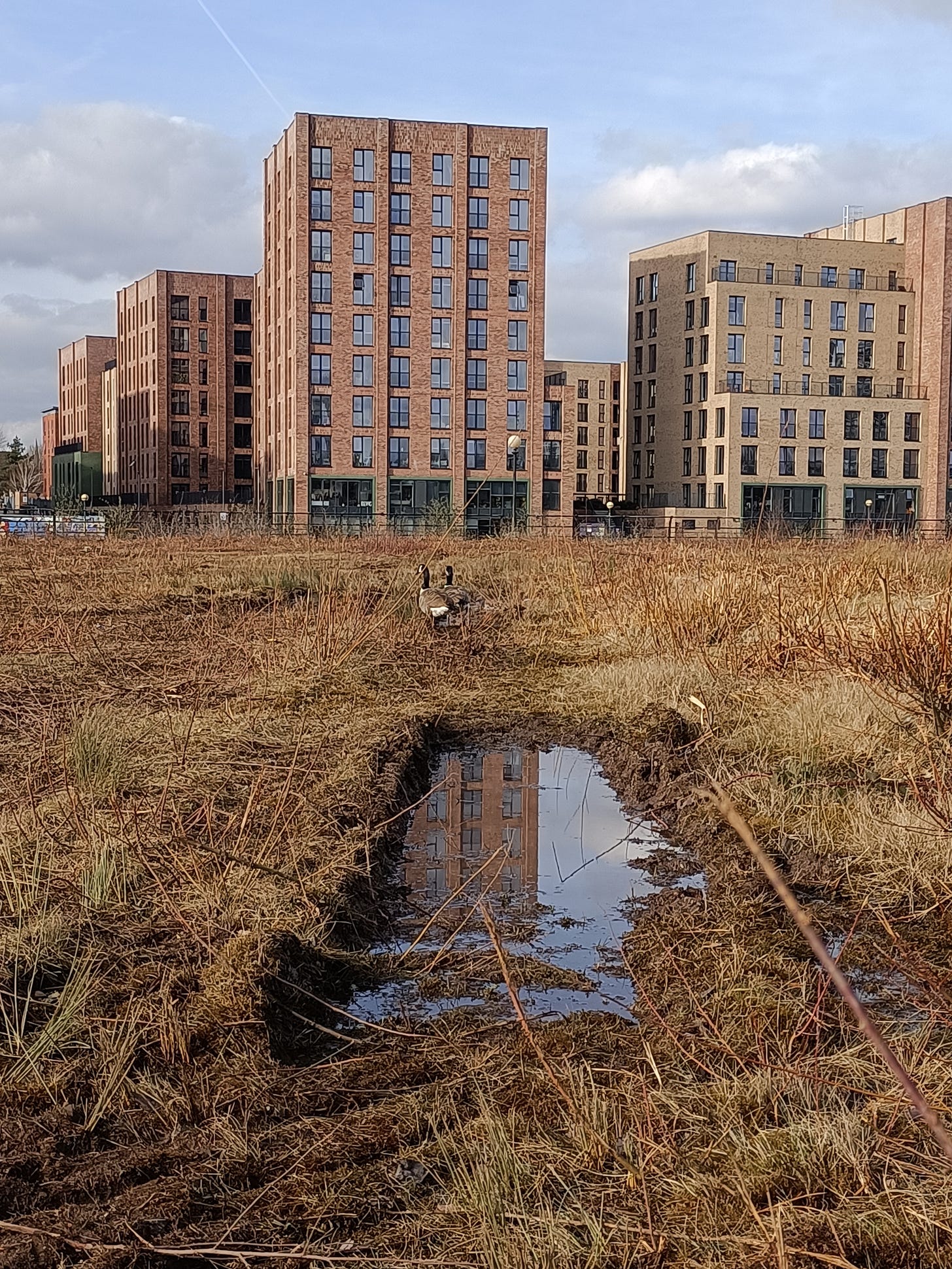

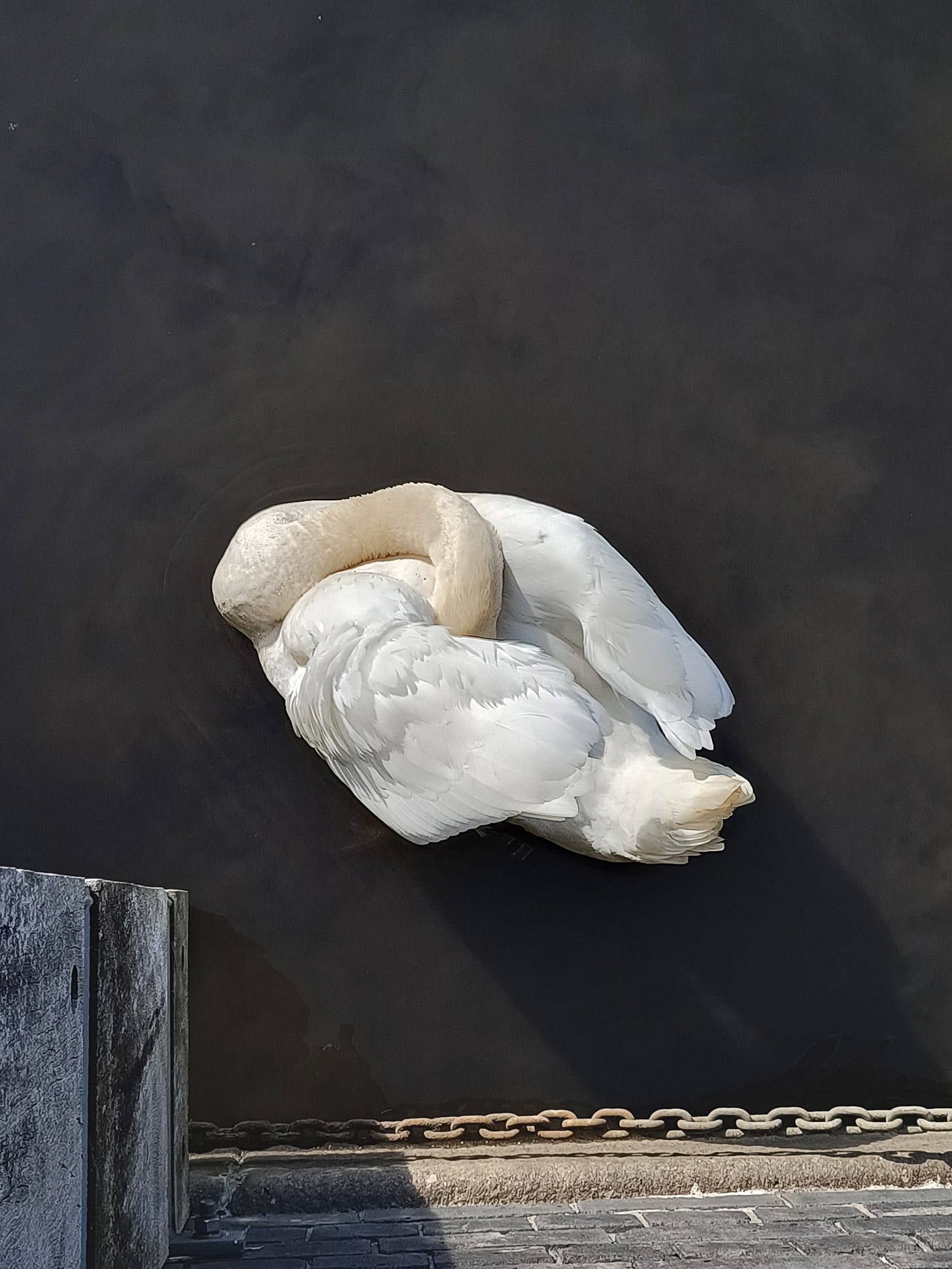

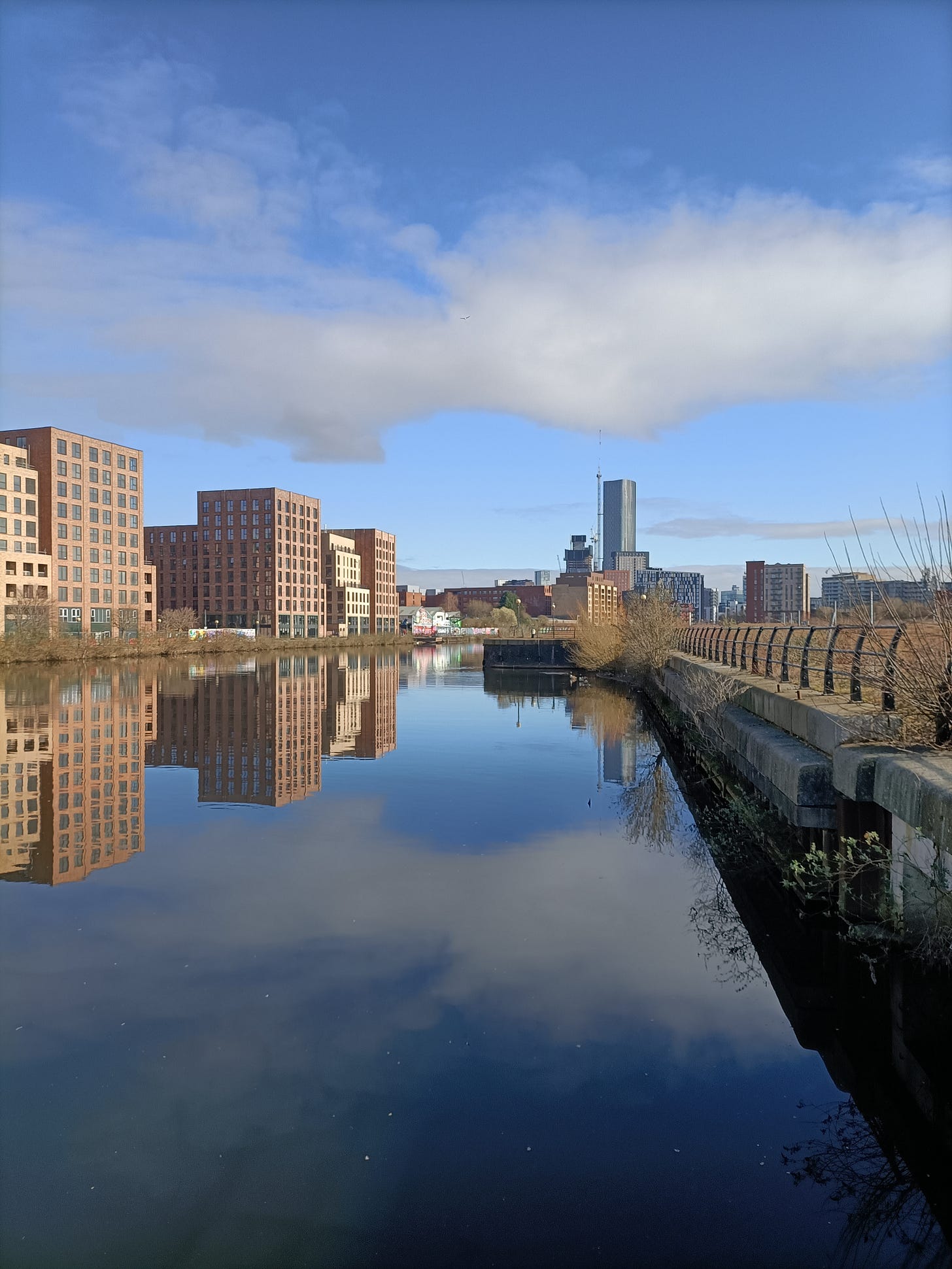
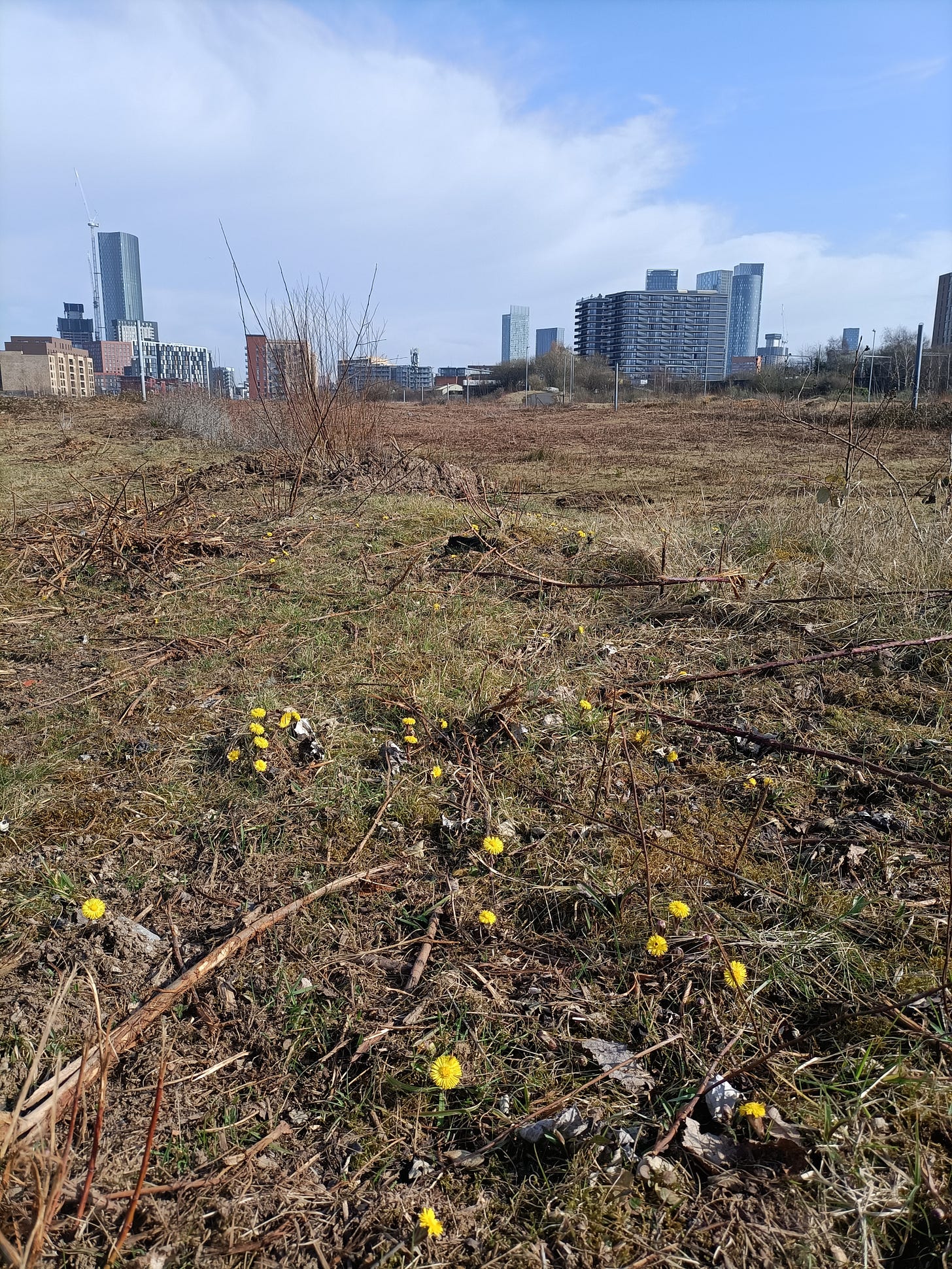
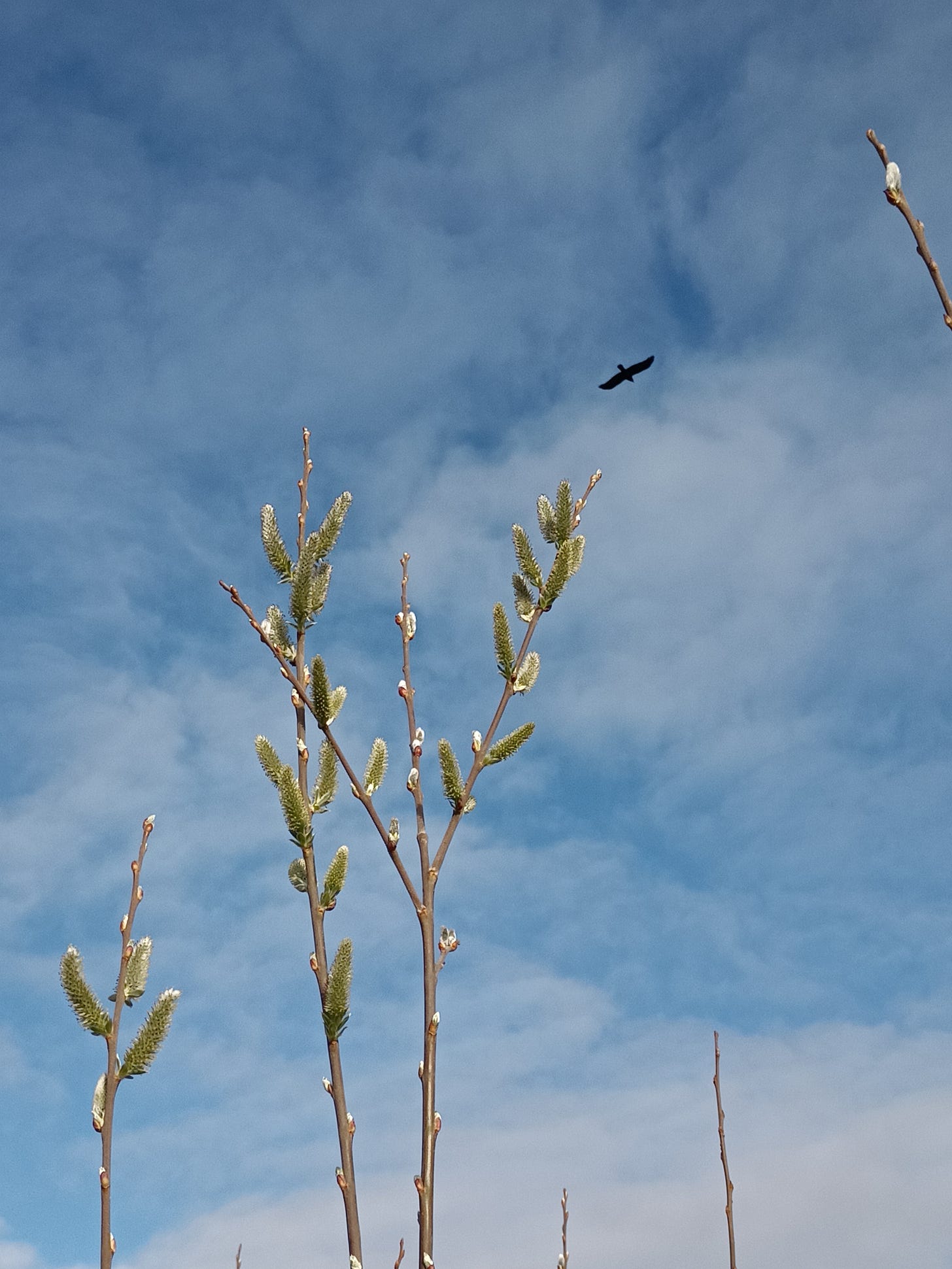


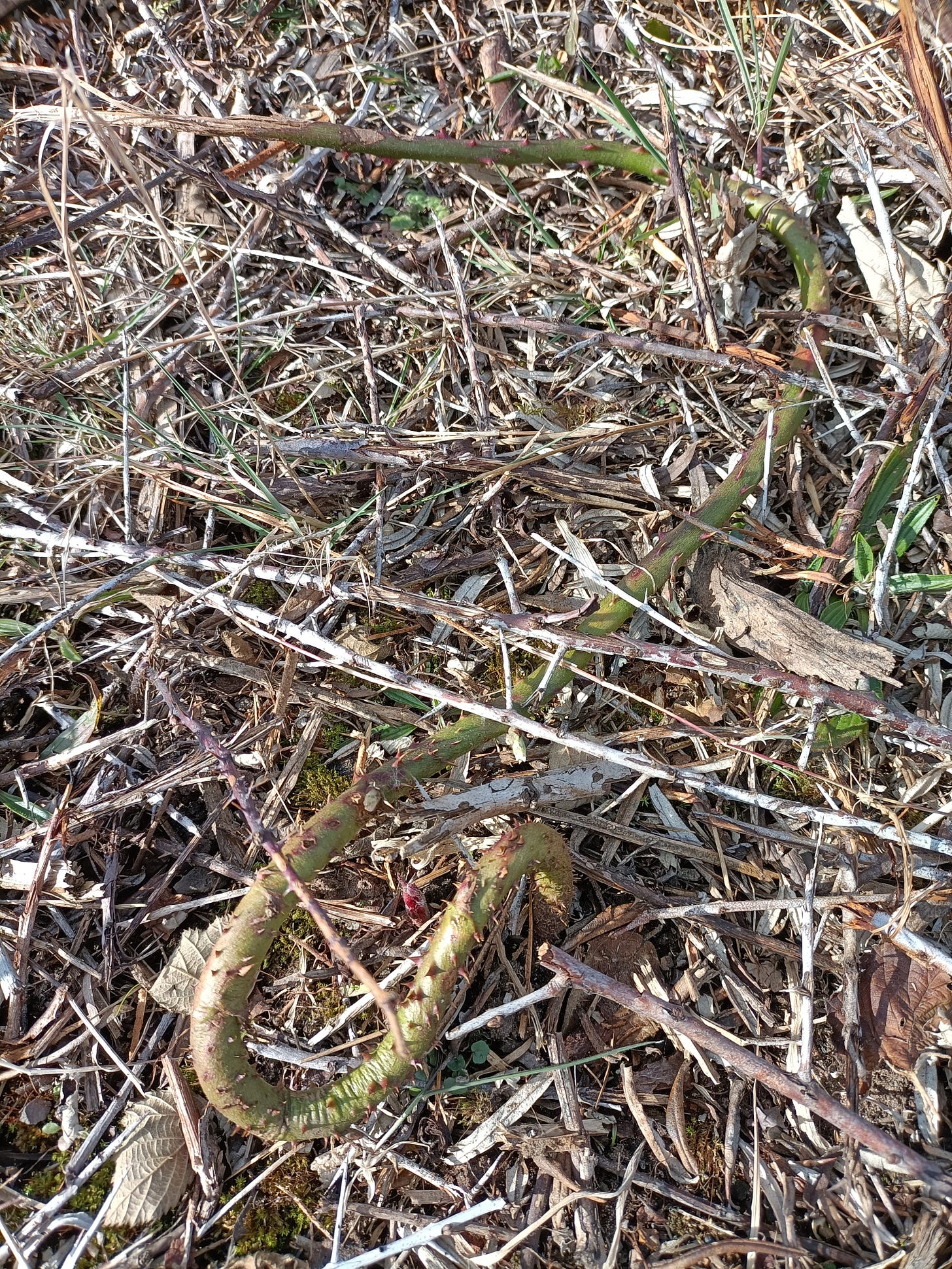
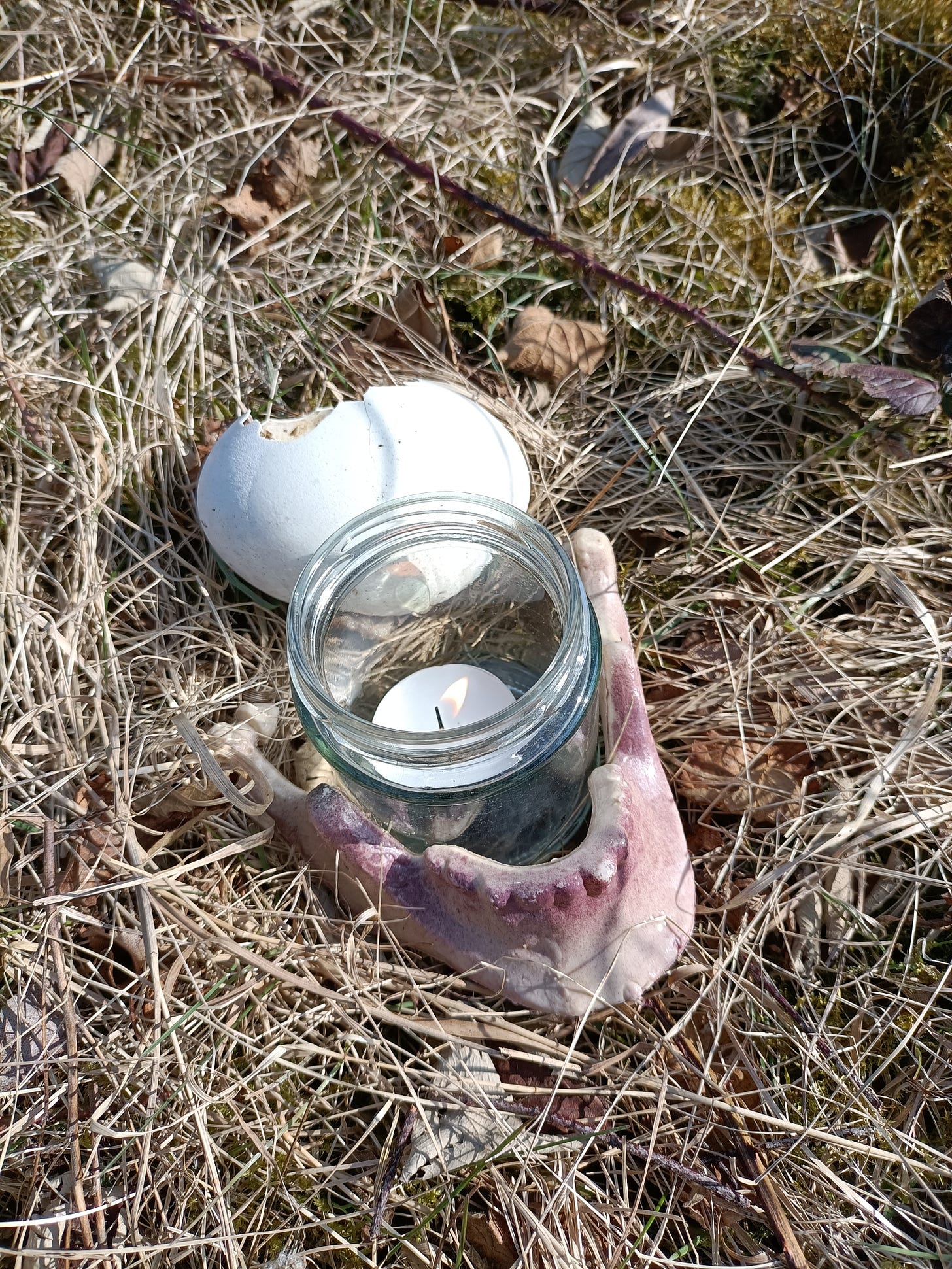
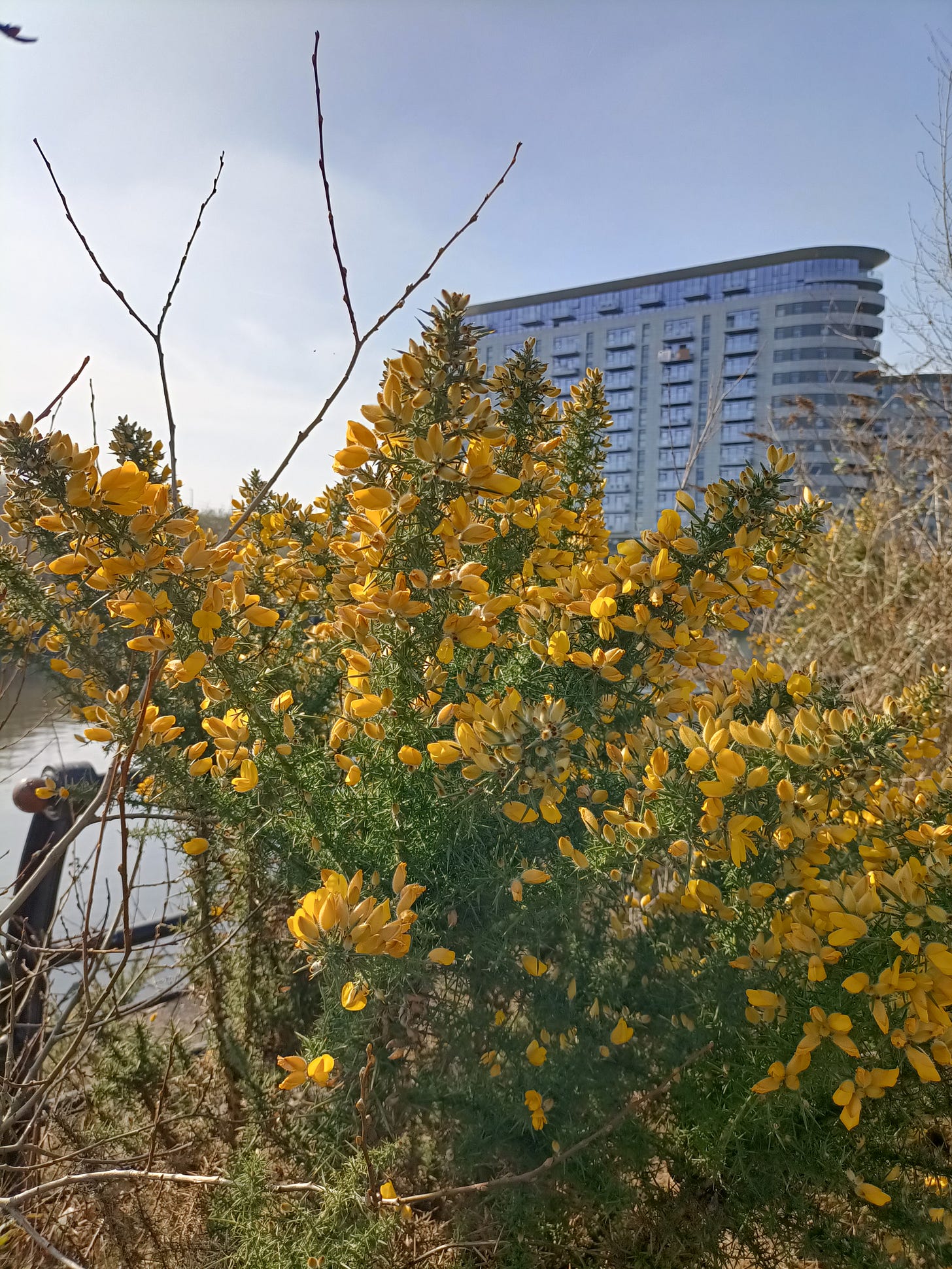
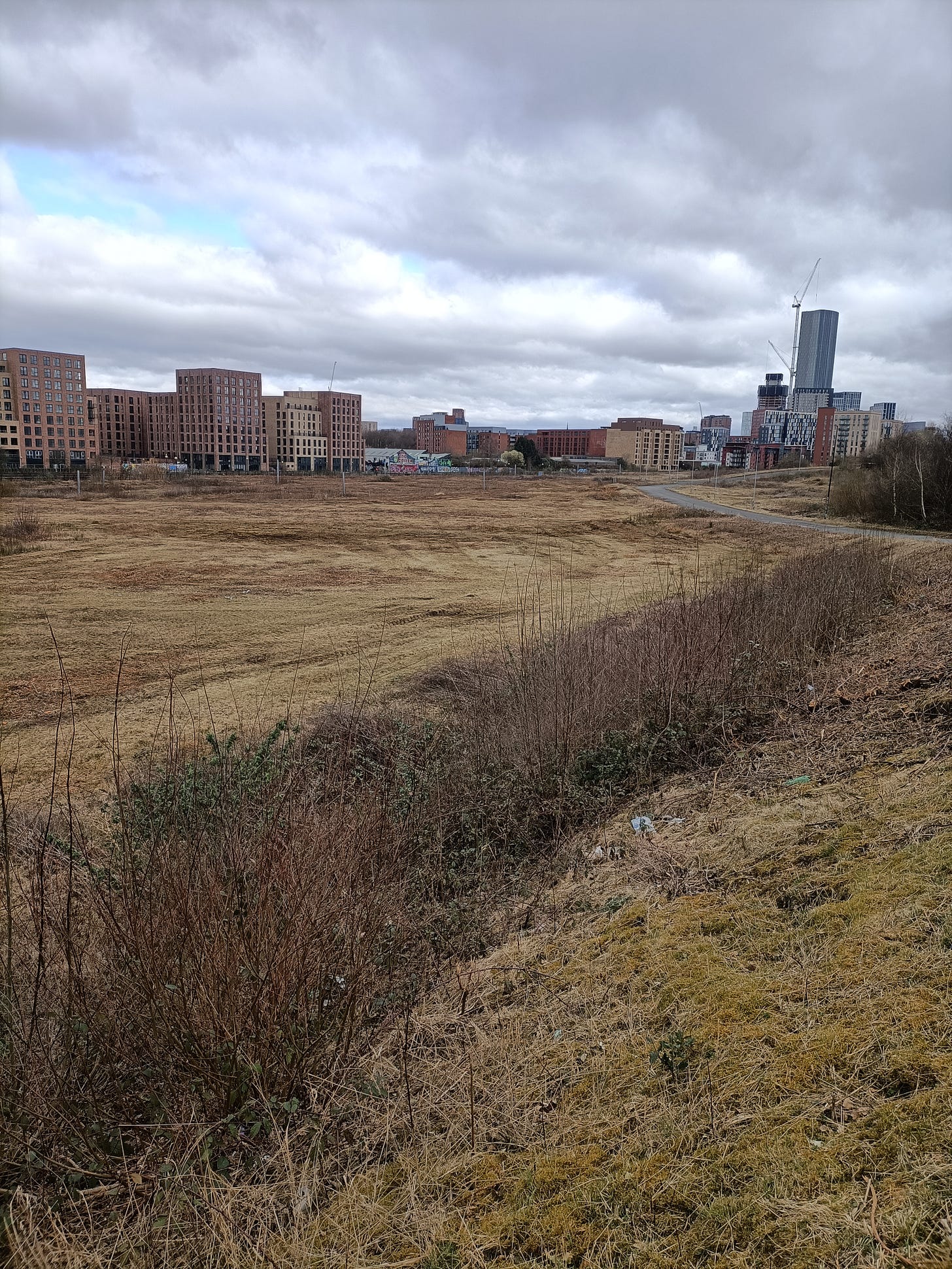


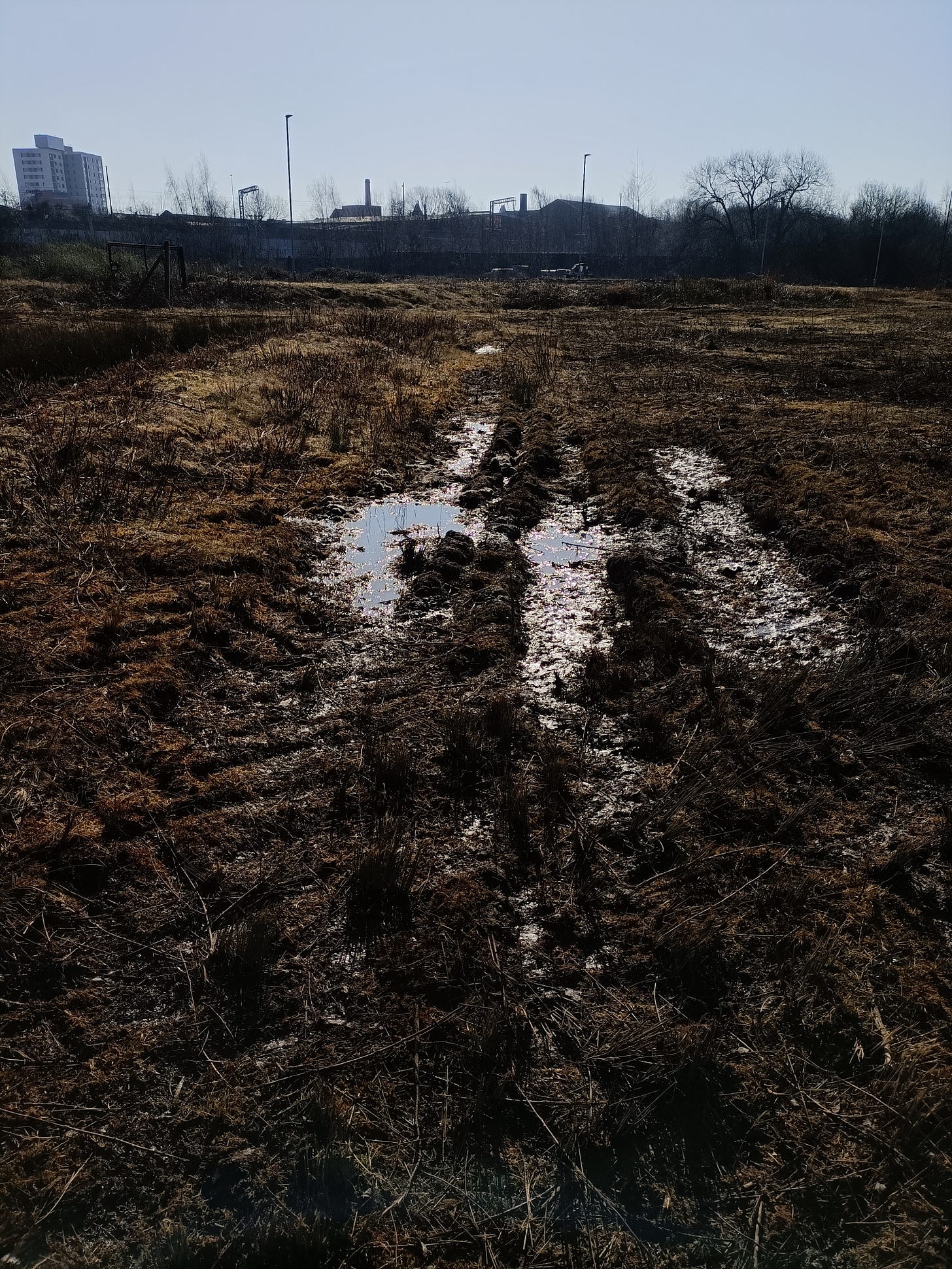
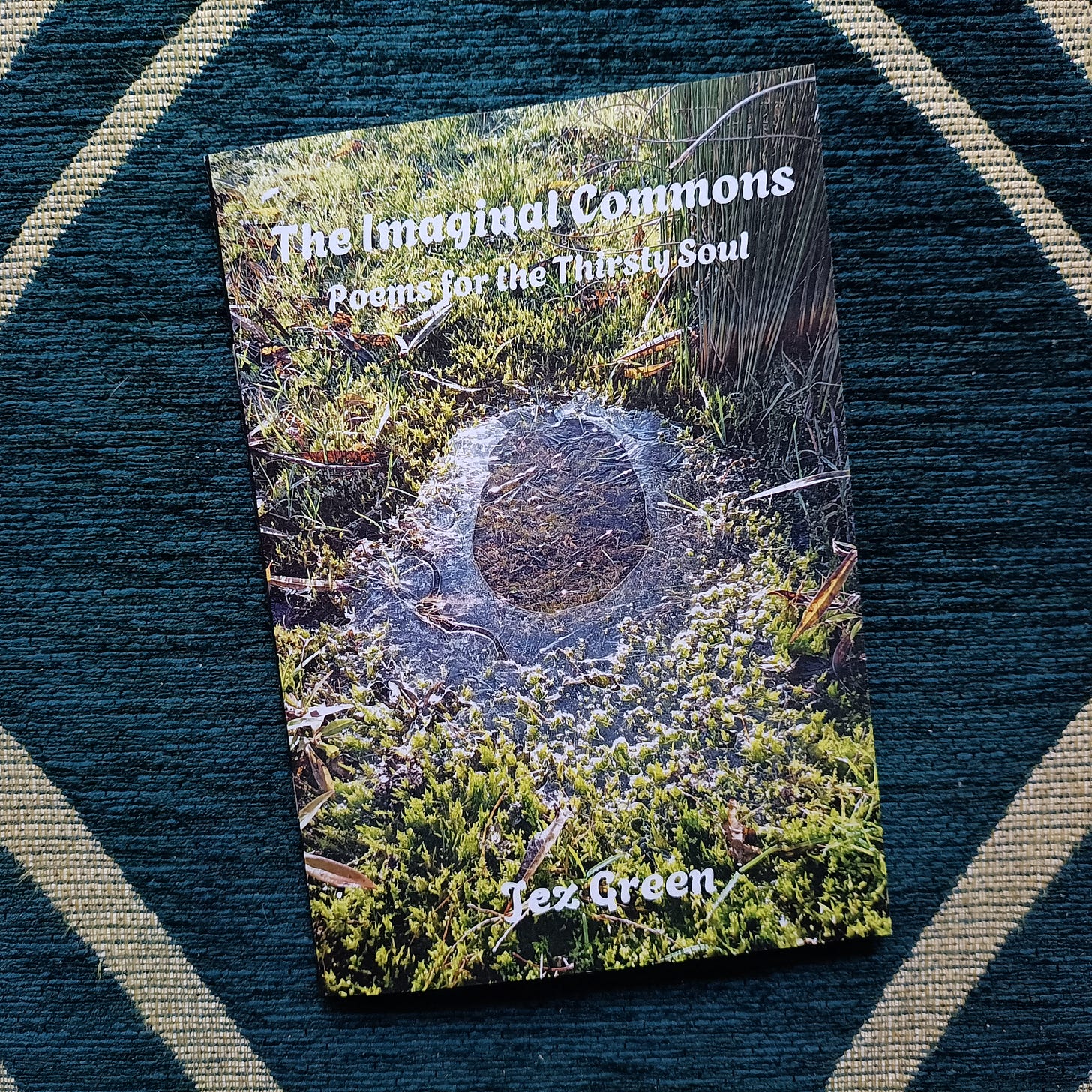









Share this post